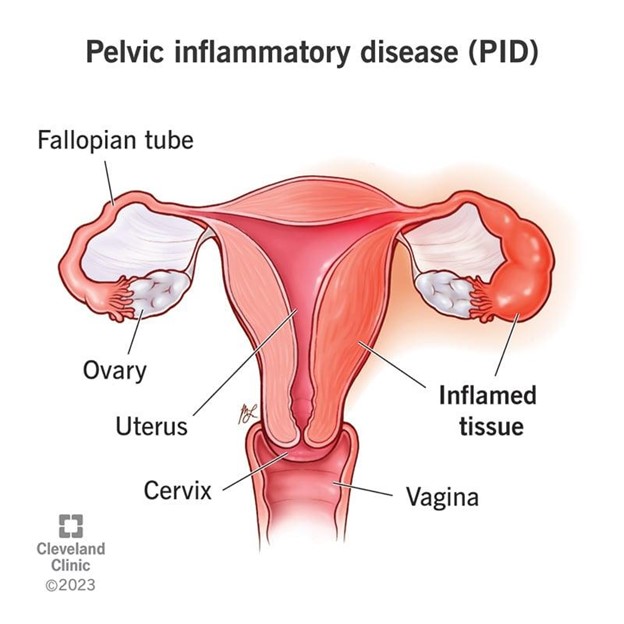Assessment of a pregnant woman reveals that she compulsively craves ice. The nurse documents this finding as
linea nigra
pica
ballottement
quickening
The Correct Answer is B
Choice A Reason: Linea nigra is a dark vertical line that appears on the abdomen of some pregnant women. It is caused by increased melanin production and usually fades after delivery.
Choice B Reason: Pica is a condition in which a person has an abnormal desire to eat substances that are not food, such as ice, clay, dirt, or chalk. It is more common in pregnant women and may indicate a deficiency in iron or other nutrients.
Choice C Reason: Ballottement is a technique of palpating a floating structure by bouncing it gently and feeling it rebound. In obstetrics, it can be used to detect the presence of the fetus by feeling its head move when the cervix is tapped.
Choice D Reason: Quickening is the first perception of fetal movements by the pregnant woman. It usually occurs between 16 and 20 weeks of gestation.
Nursing Test Bank
Naxlex Comprehensive Predictor Exams
Related Questions
Correct Answer is A
Explanation
Choice A Reason: This is correct because recurrent pelvic infections, such as pelvic inflammatory disease (PID), can cause scarring and inflammation of the fallopian tubes, which can impair the normal movement of the fertilized egg to the uterus. This can increase the risk of ectopic pregnancy, which is a life-threatening condition where the fertilized egg implants outside the uterine cavity, usually in the fallopian tube.
Choice B Reason: This is incorrect because ovarian cysts are fluid-filled sacs that develop in or on the ovaries. They are usually benign and do not affect fertility or pregnancy. However, some types of ovarian cysts, such as endometriomas or dermoid cysts, may require surgery to remove them, which can cause damage to the ovaries or fallopian tubes and increase the risk of ectopic pregnancy.
Choice C Reason: This is incorrect because use of oral contraceptives for 8 years is not a risk factor for ectopic pregnancy. In fact, oral contraceptives can reduce the risk of ectopic pregnancy by preventing ovulation and fertilization. However, if a woman becomes pregnant while taking oral contraceptives, she should stop taking them and consult her doctor, as they may have adverse effects on the developing fetus.
Choice D Reason: This is incorrect because heavy, irregular periods are not a risk factor for ectopic pregnancy. They may indicate other conditions such as hormonal imbalance, uterine fibroids, polycystic ovary syndrome (PCOS), or endometriosis, which can affect fertility or pregnancy, but not necessarily cause ectopic pregnancy.

Correct Answer is C
Explanation
Choice A Reason: This is incorrect because gastrointestinal bleeding is not an adverse effect of hydralazine, which is a vasodilator that lowers blood pressure by relaxing the smooth muscles of the blood vessels. Gastrointestinal bleeding can be caused by other conditions such as ulcers, gastritis, or hemorrhoids.
Choice B Reason: This is incorrect because sweating is not an adverse effect of hydralazine, but a normal response to vasodilation and heat loss. Sweating can also be caused by other factors such as fever, anxiety, or exercise.
Choice C Reason: This is correct because tachycardia is an adverse effect of hydralazine, which can occur as a reflex response to vasodilation and hypotension. Tachycardia can increase the cardiac workload and oxygen demand, which can be harmful for pregnant women with preeclampsia who already have impaired placental perfusion and fetal hypoxia.
Choice D Reason: This is incorrect because blurred vision is not an adverse effect of hydralazine, but a symptom of severe preeclampsia that indicates cerebral edema or ischemia. Blurred vision can also be caused by other conditions such as diabetes, glaucoma, or cataracts.
Whether you are a student looking to ace your exams or a practicing nurse seeking to enhance your expertise , our nursing education contents will empower you with the confidence and competence to make a difference in the lives of patients and become a respected leader in the healthcare field.
Visit Naxlex, invest in your future and unlock endless possibilities with our unparalleled nursing education contents today
Report Wrong Answer on the Current Question
Do you disagree with the answer? If yes, what is your expected answer? Explain.
Kindly be descriptive with the issue you are facing.
